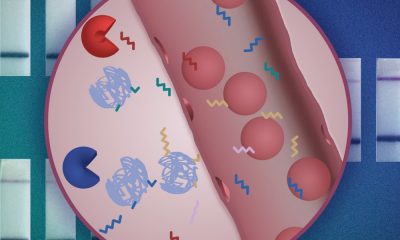A trailblazing study has found that simple salt water-containing nasal spray works at par with a steroidal nasal solution, and can alleviate snoring and other breathing difficulties in children.
The study, published in the journal JAMA Pediatrics, showed that a saline (salt water) nasal spray was as effective as an anti-inflammatory steroid nasal spray in managing sleep-disordered breathing in children, following six weeks of treatment.
Also, the saline nasal spray successfully reduced the number of children needing tonsil removal by half.
“Nasal sprays work by cleaning the nose and/or reducing inflammation not just in the nose but all the way down the back of the throat to the adenoids and tonsillar tissue to alleviate the symptoms,” Murdoch Children’s Dr. Alice Baker said, SciTechDaily reported.
In the study led by Australia’s Murdoch Children’s Research Institute, intranasal mometasone furoate was compared to intranasal saline for the treatment of symptoms of obstructive sleep-disordered breathing (SDB) in children.
“Obstructive sleep-disordered breathing (SDB) in children is characterized by snoring and difficulty breathing during sleep. SDB affects at least 12% of otherwise healthy children and is associated with significant morbidity,” researchers wrote in their paper.
The trial included 276 children of ages between three and 12 years, and was carried out at The Royal Children’s Hospital and Monash Children’s Hospital.
Both the nasal sprays resolved the symptoms in approximately 40% of participants, the study found.
“A large proportion of children who snore and have breathing difficulties could be managed successfully by their primary care physician, using six weeks of an intranasal saline spray as a first-line treatment,” Murdoch Children’s Associate Professor Kirsten Perrett noted. “Using this cheaper and readily available treatment would increase the quality of life of these children, reduce the burden on specialist services, decrease surgery waiting times, and reduce hospital costs.”
Tonsillectomy or the removal of tonsils is commonly performed to treat children’s snoring. The procedure is expensive, painful, and places a huge burden on hospital resources.
In particular, one of the kids in the trial, Thomas, aged 7, greatly benefited from the trial. The kid’s parents, Stephen Graham and Emily Tuner-Graham, said their son stopped snoring and no longer needed tonsil removal ever since he took part in the trial.
“From three years of age Thomas started snoring and we were concerned that he would eventually need surgery,” they said, as per the outlet. “Prior to joining the trial, a specialist recommended having his tonsils out. It’s a huge relief that by just using a nasal spray his breathing difficulties have cleared.”
In other news, children in California no longer need to get the COVID-19 vaccine to attend school.
















